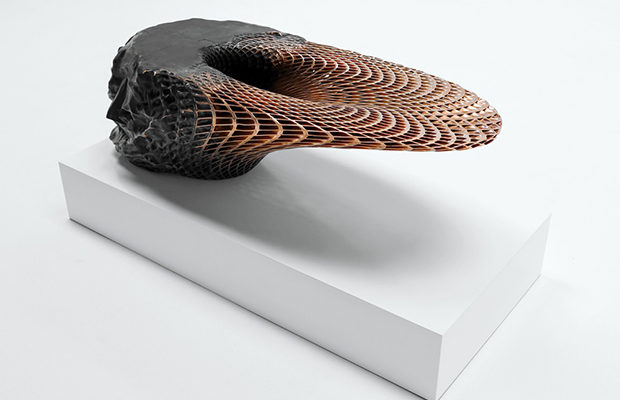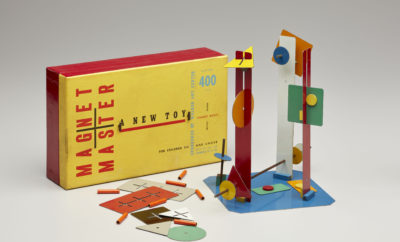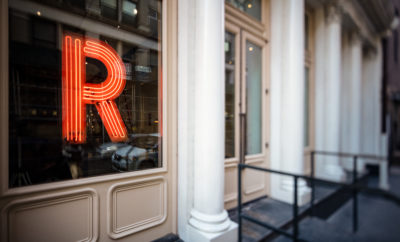 COURTESY GALLERY ALL
COURTESY GALLERY ALL
Exhibition
Gallery ALL Opens Doors to New Ideas
WITH SHOWROOMS IN DOWNTOWN LOS ANGELES and Beijing’s 751 Design Park, Gallery ALL occupies design niches on both sides of the Pacific. The gallery was founded in 2013 by Yu Wang and Qinqyun Ma after the two men were introduced by Wang’s wife, Xiao Lu, who also joined the endeavor to serve as the gallery director. The following year Gallery ALL opened its doors on the first floor of L.A.’s historic Bradbury Building to introduce Chinese design works to Western patrons. While Chinese visual arts had progressed to the forefront of contemporary art, the country’s design culture had remained relatively anonymous in American and European circles. The Chinese-born Wang, who studied architecture and design in the United States, and Ma, a prominent Chinese architect and dean of the University of Southern California School of Architecture, both viewed this not only as a shortcoming of the marketplace but as a unique circumstance. “We had the opportunity to work with the best designers in China,” Wang says.
Gallery ALL’s first L.A. exhibition featured the work of Naihan Li and Zhoujie Zhang, two designers the gallery continues to represent. Li, a protégé and close friend of the artist Ai Wei-wei, is perhaps China’s best-known figure in contemporary design. In her Crates collection, which ranges from bookshelves and chests to a foosball table, she uses plywood and stainless steel to create objects that move via wheels and kinetic hinges. While current design trends may prefer precious resources and static placement, Li’s work offers not only a contrast but also a commentary on the life of artists in Beijing, who often find themselves packing up their belongings and moving to new residences at a moment’s notice. “If Naihan Li’s work is not always very functional, that is only because it does not have to be,” Wang says. Zhang’s pieces, on the other hand, present a more scientific approach to design. The unique contours of his trademark metallic chair with pointed legs (Wang calls it “the famous chair”) are formed through applied mathematics and three-dimensional modeling. The seamless welding technique Zhang utilizes to achieve the effect required three years of intensive research to master.
After a positive reception in L.A., Gallery ALL’s founders turned their sights to Beijing. If Chinese designers had resonated with American and European clients, they reasoned, the reverse might also be true; Western designers were equally unknown to the insulated culture within China. The gallery’s five-thousand-plus-square-foot Beijing site debuted with a solo show of pieces by Aranda\Lasch, the New York– and Tucson–based architecture and design firm founded by Benjamin Aranda and Chris Lasch, with whom Wang had worked previously. Their Primitives and Quasi series explore diverse combinations of crystallographic structures. “Aranda and Lasch are unique in their fabrication process, which is truly cutting edge,” Wang remarks. Based on the response of the Beijing clientele, Gallery ALL has also introduced pieces by Janne Kyttanen, the Finnish designer known for his inventive work in 3-D printing.

COURTESY GALLERY ALL
Yet despite its success in bridging the primarily geographic space between separate design communities, Wang believes there is more than an “East and West” theme to Gallery ALL. The gallerist refers to what he calls a “philosophy of now,” which he describes as collaboration with designers who eschew cultural exclusivity in favor of innovative techniques and processes that demonstrate their openness to all ideas—Eastern, Western, or other. gallery-all.com












